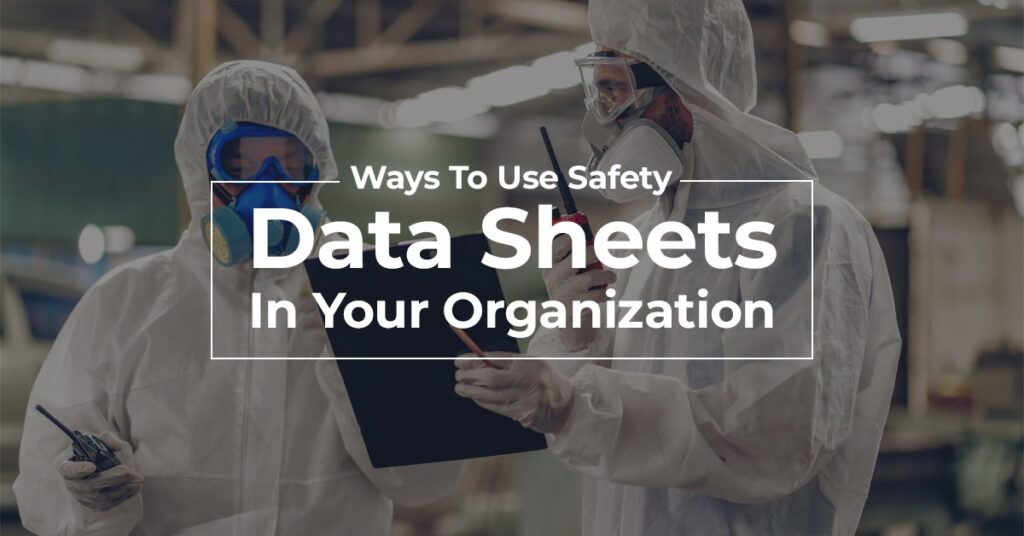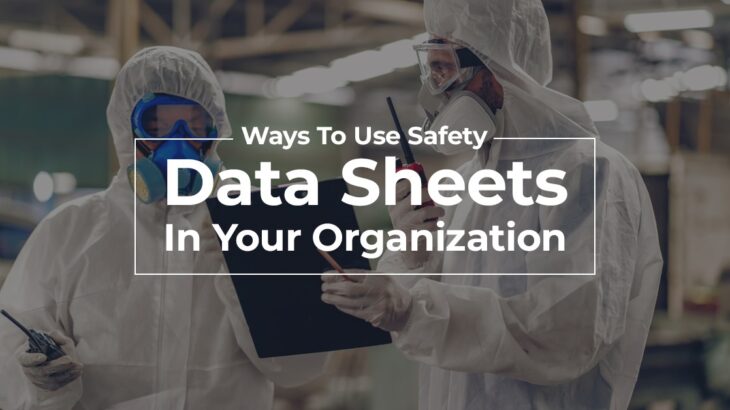
Safety Data Sheets (SDS) are essential documents that provide crucial information about the properties and hazards of chemical products. While many view SDS as a regulatory requirement, their value extends beyond compliance. This blog post will explore ways to use Safety Data Sheets to enhance workplace safety, emergency response preparedness, and overall chemical management.
Personal Protective Equipment (PPE):
For the certification of personal protective equipment (PPE) assessment [1910.132(d)(2)], it is essential for every employer to document whether employees utilize PPE in their job roles. Employees who work with harmful chemical substances should refer to their respective chemicals in the Safety Data Sheet (SDS). This assessment ensures whether PPE is required, under what circumstance it should be used, the type of exposure it requires, and what type of PPE should be used.
Fire Extinguisher:
Safety Data Sheets (SDSs) assist in identifying the appropriate fire extinguishers required for specific work areas, depending on the hazardous substances utilized or stored in those locations. Guidance on combating a fire involving a particular chemical is available in Section 5 of any Safety Data Sheet. It’s worth noting that there are five distinct fire extinguisher types and multi-class variations.
Transfer Of Chemical Substance:
Before transferring a hazardous substance between containers, refer to the Safety Data Sheet (SDS). The SDS sections 7, 13, and 14 precisely detail guidelines for the secure handling, appropriate disposal, and classification for shipping and transportation of any hazardous material.
Health Effects:
When an employee reports a health issue, and it’s challenging to ascertain if it’s work-related, especially when their supervisor observes signs of a physical ailment, it is advisable to refer to your Safety Data Sheets (SDS) before prematurely attributing it to a specific condition like eczema. Section 11 of the SDS provides information on toxicology and health effects, while Section 8 details exposure limits.
SDS Manual:
Whether undergoing a safety audit or getting ready for an audit, it is crucial to guarantee that Safety Data Sheets (SDSs) are easily reachable for all employees. It implies that there should be no hindrances to their accessibility. Physical copies must not be confined to a locked cabinet or office, and electronic access should not necessitate a password. Safety audits about chemicals and areas for chemical storage should encompass SDS compliance, ensuring the absence of any missing or outdated sheets, among other factors.
SDS Engineering Solution:
When creating a ventilation system as an engineering solution to minimize exposure to dangerous substances, such as implementing local exhaust ventilation or choosing a biosafety cabinet, it is advisable to refer to the Safety Data Sheet (SDS) for the specific substance(s) targeted for removal. The SDS can provide valuable insights to assist in choosing the appropriate ventilation system. For instance, it may highlight specifications like the necessity for a non-sparking motor on the fan or the restriction against the filtering media exhausting back into the room.
Safety Data Sheets are more than just compliance documents; they are invaluable tools for promoting a culture of safety, emergency preparedness, and responsible chemical management. By incorporating the suggested practices through Sunstream’s SDS services, businesses can harness the full potential of SDS, ultimately creating safer workplaces and contributing to a sustainable future.




 +1.585.935.7123
+1.585.935.7123 +91-804-148-6861
+91-804-148-6861